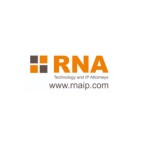On November 22 2023, a decision by the High Court of Delhi clarified the recommended practice concerning the submission of data to support patent applications at the Indian Patent Office, with reference to Section 3(d) of the Patents Act, 1970 (the Patents Act).
The issue arose in the context of patent application No. 9739/DELNP/2011, filed by Ischemix LLC, titled 'Compositions and Methods for Treating Ischemia and Ischemia-Reperfusion Injury'. The application was refused by the Indian Patent Office under Section 3(d) of the Patents Act. Ischemix LLC filed an appeal before the High Court of Delhi under Section 117A of the Patents Act, challenging the order of the controller refusing the patent application.
The arguments presented to the High Court of Delhi
In its appeal to the High Court of Delhi against the refusal order, the applicant argued that the data on the therapeutic efficacy of the claimed compound that was submitted had not been referred and that there was no discussion in respect of the same in the impugned order. The therapeutic efficacy of the claimed isomer was demonstrated by:
Submitting data relating to in vitro and in vivo studies, and clinical trials; and
The filing of reports by two experts to support the plea for enhanced therapeutic efficacy.
The counsel on behalf of the Indian Patent Office submitted the following:
A statement that “the Appellant may have given some data in support of the claim for enhanced efficacy, but failed to show how the same constituted therapeutic efficacy”.
In an email note filed by the appellant, “a clear and definitive explanation has been given on how the Appellant wishes to substantiate its claim of enhanced therapeutic efficacy. The same was not presented during the course of patent prosecution. Thus, the Patent Office is willing to reconsider and re-examine the subject patent application.”
The court’s findings
The court, after hearing both parties, observed that the settled position with the Supreme Court ruling in Novartis on Section 3(d) is “that whenever any patent Applicant wishes to place on record and demonstrate therapeutic efficacy… the same has to be done precisely. The Applicant must ensure that comparative tables, and a clear explanation as to the way the new form of the known substance has significant enhancement in therapeutic efficacy is placed before the Patent Office during prosecution of the application. The same could be in the form of comparative tables, in-vitro and in-vivo data [and] also clinical trial data.”
The court also discussed a relevant extract from DS Biopharma v The Controller of Patents and Designs and Anr. with regard to the directions to be followed by patent applicants while attempting to overcome the objections under Section 3(d) of the Patents Act, 1970:
“i) The Appellant shall file its response on the basis of the identified known substances and the extracts of the impugned order as set out above. In response, the Appellant may also produce efficacy data and support its submissions as to how Section 3(d) is not applicable.
ii) The said response shall be filed by the Appellant within a period of 8 weeks – upon which, a fresh hearing shall be granted on the issue of whether the claims 1–4 are liable to be granted or not in view of the objections under Section 3(d) of the Act.”
Practice directions for the use of data in patent applications
The court thus issued the following practice directions:
For a patent application relating to derivative compounds, “the patent specification, itself, ought to contain some data and results of lab experiments which demonstrate enhancement of efficacy of the subject invention for which [a] patent is sought”; and
If additional data “becomes available, the said data ought to be submitted by the patent Applicant, and be placed before the Patent Office prior to the date of final oral hearing”.
Finally, the court noted that patent applicants often file experimental data at the stage of final written submissions. At this stage, the oral hearings before the Patent Office are concluded and the data may not be referred during oral hearings. This may lead to a situation, as in the present case, where the Patent Office is likely to have overlooked the data and failed to consider the same.
There is also the possibility of the data not being completely understandable in written submissions without oral explanation. Therefore, the experimental data for the therapeutic efficacy of a derivative compound should be submitted before the hearing, for the consideration of the controller, in the form of comparative tables, in vitro or in vivo data, or clinical trial data, with a clear explanation as to how the new form of the known substance has significant enhancement in therapeutic efficacy.












